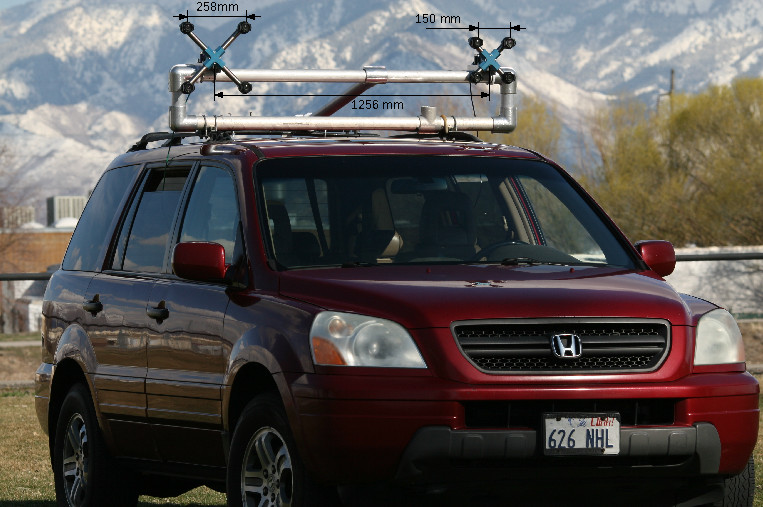Dual Quad-Camera Rig for Capturing Image Sets
Following the plan laid out in the earlier post we’ve built a camera rig for capturing training/testing image sets. The rig consists of the two quad cameras as shown in Figure 1. Four identical Sensor Front Ends (SFE) 10338E of each camera use 5 MPix MT9P006 image sensors, we will upgrade the cameras to 18 MPix SFE later this year, the circuit boards 103981 are in production now.
We decided to use cameras with different baselines: 150 mm and 258 mm, the distance between the quad-camera centers is 1256 mm. The distance map calculated from the larger of the two cameras will have higher precision, than the distance map from the smaller one. For the same processing algorithms and the same object the distance resolution is reverse proportional to the baseline. Even higher resolution will be achieved by fusing depth maps from the two cameras together. The higher precision results may be used for the cost functions of the lower distance resolution camera instead of the unavailable real ground truth data. To make the rig sufficiently rigid the cameras are mounted on the aluminum tube (OD=57 mm), and that tube is attached to the rest of the mount through the vibration isolators.
Each of the two cameras uses matched set of the lenses with focal length variation of less than 1% to simplify frequency domain mutual image rectification. Cameras still need fine alignment and calibration, after that we will start image sets capturing.
This year Computer Vision and Pattern Recognition conference (CVPR 2018) will be held in Salt Lake City, Utah. We plan to participate in the CVPR exhibition and we will be happy to see visitors at Elphel office that is less than 10 km from the conference venue.

Leave a Reply